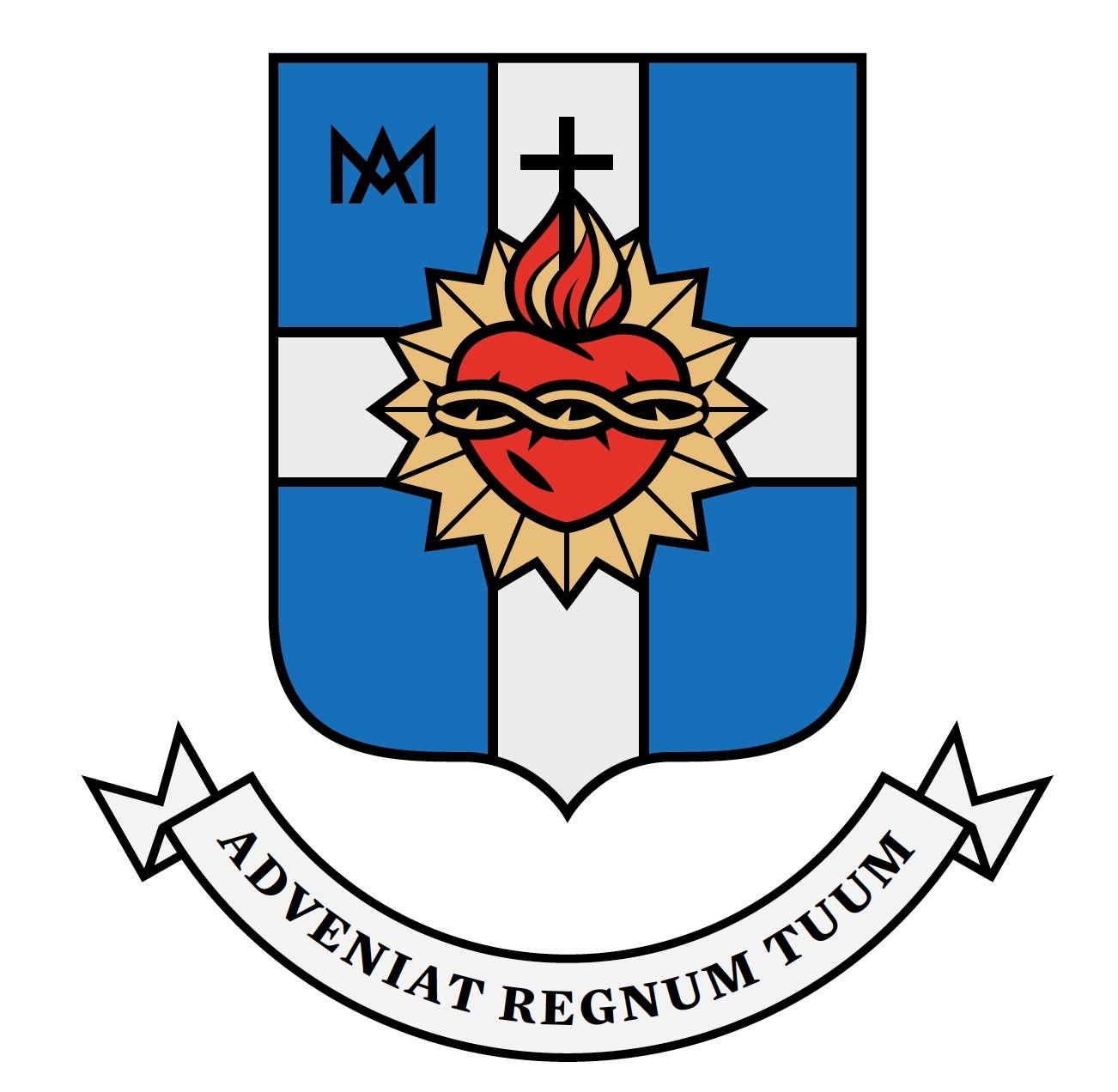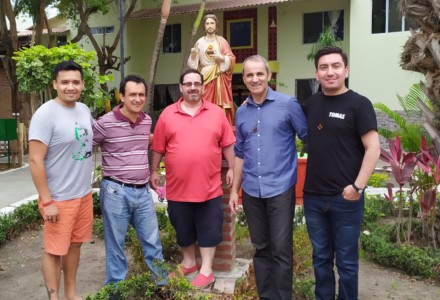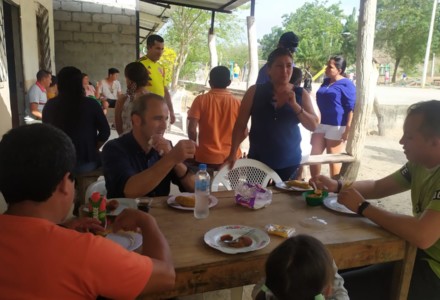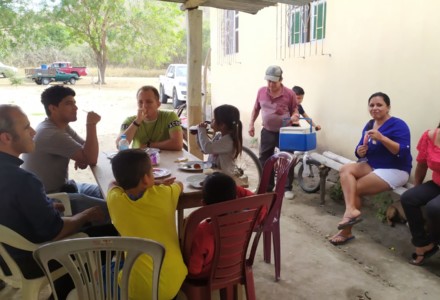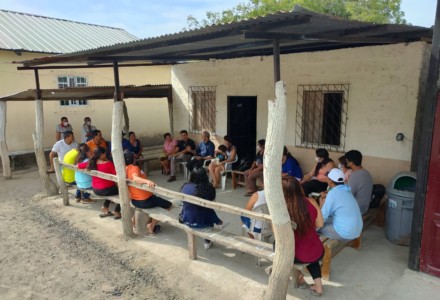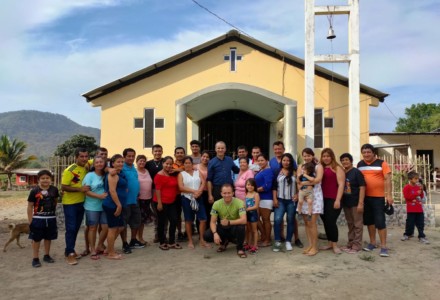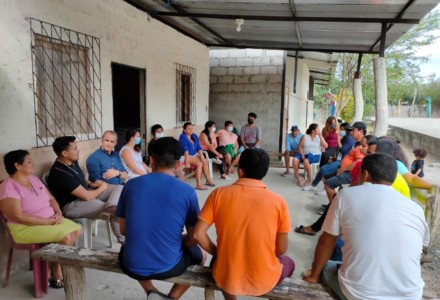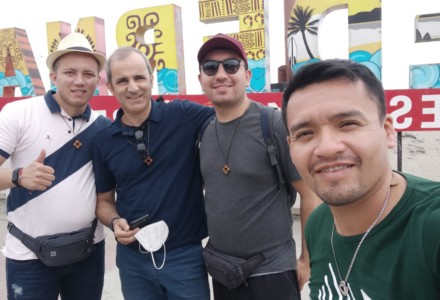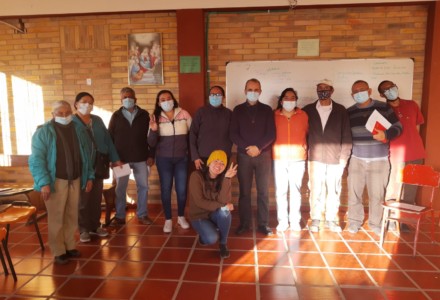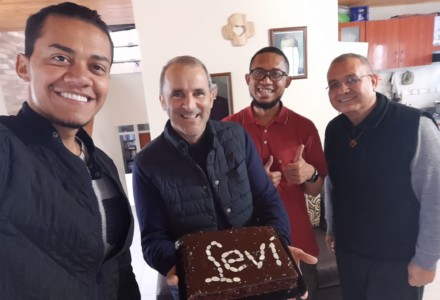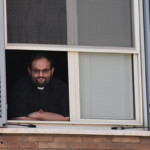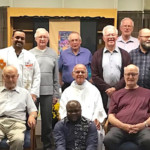In 2022 the Dehonians in Ecuador will celebrate 25 years of their foundation. Fr. Levi, general councilor, recently made a brief visit to the district.
Quito’s altitude is almost 3000 meters (9800 feet). It is a very beautiful city and is geographically situated between volcanoes. Any visitor is amazed to see this. Our confreres, however, have already become accustomed to living in this high altitude environment and have become acquainted with the cold, the latitude and the constant climate changes. The natural beauty and the wonderful historical heritage of Quito contribute to a peaceful coexistence with the volcano craters (some of them active!).
There are four Dehonian religious communities in the District. Two are in the city of Quito: Miraflores (Quito I) and Argelia (Quito II), Baia de Caraquez is on the Ecuadorian coast and there is one in Bogotá, Colombia. In all there are 13 SCJs working in the District. They come from Ecuador, Brazil, Chile, Colombia, Spain, Argentina and Indonesia.
All of them are engaged in parish work and pastoral social services. Even though my visit was short, I was able to see the extent of the Dehonians’ mission in these places. I was also able to experience the profound cultural richness that characterizes that country. There is a clear difference in traditions, food, mentality, and especially climate between Quito and Bahía de Caráquez.
All this, of course, does not hinder the religious-pastoral work. Both realities are open and welcoming. The communities are joyful and active, and celebrate their patron saints with fervor and zeal. And even in the face of the limits imposed by the pandemic, they try to carry on with their devotion. They are people of faith.
Faith has undoubtedly helped the inhabitants of Manabí Province in indescribable ways. In 2016 an earthquake destroyed several houses in several towns along the coast, including in Caraquez Bay. Gradually the towns are resuming life without forgetting those minutes of terror that claimed many lives. Even today there are places that are still condemned due to the risk of collapse. Many families had to leave their homes and move to safer areas. Tourism left the region generating a serious economic crisis. Many people are unemployed. Many are trying alternatives to survive such as selling fruits and spices typical of the region on the streets of the cities.
SCJs are doing their best to serve the communities to help them recover from this catastrophe. For example, through canteens called “eaters” where they serve food to the homeless and other families in need. One of these canteens is called the Father Dehon Canteen. Our confreres insist on sharing with the people who come there who Father Dehon was and the social dimension of our charism. With the support of committed lay people it is possible to feed many needy families.
The rural communities also benefit from social programs sponsored by the Spanish Province that have as their main target the education of children. They are accompanied financially by lay benefactors, called godparents, who send a financial contribution so that the children of the farmers and merchants stay in school. This project is called sponsorship.
There is also the Orbayu Project, which consists in supporting micro-enterprises and small farmers with interest-free credits. ESIC, the Spanish Province and an insurance company are sponsors of this project.
Thanks to the commitment of all to carry on the work started by the first Spanish missionaries since their arrival in Ecuador (October 15, 1997), the District continues on its way harvesting fruits also in terms of vocations: Father Humberto is the first Ecuadorian priest. At the moment two novices, both Ecuadorians, are preparing for their first religious profession, and another Ecuadorian will make his novitiate in Brazil. Some vocations are in accompaniment.
Next year the 25th anniversary of the foundation of the District of Ecuador (ECU) will be celebrated.

